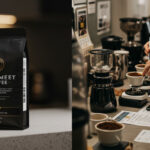
Coffee and Community: How Local Coffee Became Cultural Landmarks
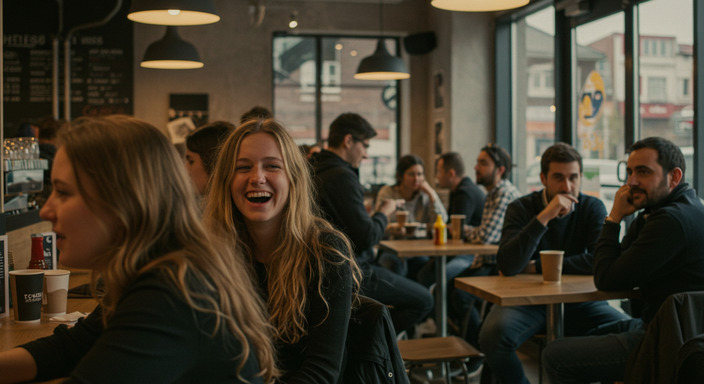
Table of Contents
ToggleThe Origins of Local Coffee
The Emergence of Coffee as Social Spaces
Long before they became the cozy corners of modern communities, coffee emerged as vibrant hubs of social interaction. In the 16th century, the first coffeehouses appeared in the Middle East, particularly in cities like Mecca and Istanbul. These establishments were not merely places to drink coffee; they were gathering spots for intellectuals, merchants, and artists to exchange ideas and discuss politics. The concept quickly spread to Europe, where cafés became synonymous with cultural and social discourse.
Historical Influence on Coffee Culture
The rise of coffeehouses played a pivotal role in shaping coffee culture globally. These spaces became microcosms of society, reflecting the values and aspirations of their time. For instance:
- In 17th-century England, coffeehouses were dubbed “penny universities,” as patrons paid a penny for entry and a cup of coffee while engaging in scholarly debates.
- In France, cafés like Café Procope became the meeting grounds for philosophers like Voltaire and Rousseau, fostering the Enlightenment movement.
This historical influence cemented the café as a cultural institution, blending the ritual of coffee drinking with the art of conversation.
Evolution from Coffeehouses to Modern Coffee
Over the centuries, the coffeehouse has evolved into the contemporary café, adapting to changing societal needs and tastes. The 20th century saw the rise of specialty coffee, with a focus on quality and craftsmanship. Modern cafés have become more than just coffee-serving establishments; they are cultural landmarks that offer:
- Artisanal coffee brewed with precision, appealing to enthusiasts who value the nuances of flavor profiles.
- Ambiance designed for comfort, blending aesthetics with functionality to create spaces for work, leisure, and community building.
Today, the legacy of the coffeehouse lives on, as local cafés continue to foster connections and celebrate the rich heritage of coffee culture.
The Role of Coffee in Community Building
Cafés as Meeting Points for Diverse Groups
Cafés have long served as cultural crossroads, where people from all walks of life converge. Whether it’s a bustling urban coffeehouse or a quaint neighborhood café, these spaces foster connections among individuals who might otherwise never interact. From students brainstorming over lattes to professionals networking during their morning brew, cafés are a microcosm of community. They provide a neutral ground where conversations flow freely, transcending age, profession, and background.
Fostering Creativity and Conversation
The ambiance of a café is often designed to inspire. The aroma of freshly ground coffee, the hum of chatter, and the presence of like-minded individuals create an environment ripe for creativity. Writers, artists, and thinkers have historically frequented cafés to find inspiration and exchange ideas. Even today, these spaces remain a haven for those seeking a creative spark. Whether it’s a poet jotting down verses or a group of friends debating the latest trends, cafés are a catalyst for meaningful dialogue.
Supporting Local Artists and Entrepreneurs
Many cafés go beyond serving coffee by actively supporting their local communities. They often serve as platforms for emerging artists, showcasing paintings, photography, or handmade crafts. Live music nights, poetry readings, and open mic events further enrich the cultural fabric of the neighborhood. Additionally, cafés frequently partner with local entrepreneurs, sourcing ingredients from nearby farms or collaborating with small businesses. This symbiotic relationship not only boosts the local economy but also strengthens the sense of community.
Design and Atmosphere: The Heart of a Coffee
The Importance of Interior Design in Creating Ambiance
Step into any coffee, and the first thing you notice is the interior design. It’s more than just aesthetics—it’s a carefully crafted experience. From the choice of furniture to the color palette, every element plays a role in shaping the ambiance. A minimalist design with clean lines can evoke a sense of calm, while warm, rustic tones invite a cozy, communal vibe. The layout, too, is crucial: open spaces encourage socialization, while secluded corners offer solitude for introspection or work. A well-designed café doesn’t just serve coffee; it curates an environment where every sip feels intentional.
The Role of Music and Lighting
Music and lighting are the unsung heroes of a coffee’s atmosphere. The right playlist can set the mood, whether it’s indie folk for a laid-back afternoon or jazzy tunes for a sophisticated evening. Lighting, on the other hand, is equally transformative. Soft, warm hues create an inviting glow, perfect for intimate conversations, while bright, natural light energizes the space for morning productivity. Together, these elements harmonize to elevate the coffee experience, making it more than just a beverage—it’s a moment to savor.
- Music: Sets the tone and enhances the emotional connection.
- Lighting: Shapes the mood and influences how the space is perceived.
How Coffee Reflect Local Culture and Identity
Coffee are more than just businesses; they are cultural microcosms. From the artwork on the walls to the locally sourced ingredients in the pastries, every detail tells a story. In a bustling city, a café might embody urban chic with sleek designs and modern décor. In a small town, it could celebrate heritage with vintage furnishings and traditional motifs. Local culture permeates every aspect, from the coffee beans chosen to reflect regional flavors to the community events hosted within its walls. A café isn’t just a place to drink coffee—it’s a living, breathing reflection of the community it serves.
Baristas: The Soul of Local Coffee
The Art and Craft of a Professional Barista
A great barista is much more than someone who serves coffee—they are a skilled artisan. From mastering the precise grind size and water temperature to perfecting milk texturing and latte art, their expertise transforms a simple beverage into a sensory experience. Every cup they craft is a testament to years of practice, attention to detail, and an unwavering passion for quality. Their ability to balance acidity, sweetness, and body ensures that each sip is a revelation, whether it’s a meticulously pulled espresso or a velvety cappuccino.
- Technical Mastery: Proficiency in dialing in grinders, calibrating extraction times, and ensuring consistent flavor profiles.
- Creativity: Experimenting with recipes, seasonal ingredients, and artistic presentations.
- Adaptability: Adjusting techniques for different beans, brew methods, and customer preferences.
Educating the Coffee-Drinking Community
Beyond the machine, baristas serve as ambassadors of coffee culture. They demystify complex concepts like single-origin versus blends or light versus dark roasts, making specialty coffee accessible to everyone. Whether guiding a novice through their first pour-over or debating the nuances of processing methods with an aficionado, they foster curiosity and appreciation. Many cafés host tastings, workshops, and even “brew-at-home” tips—initiatives often spearheaded by baristas eager to share their knowledge.
“A barista’s role isn’t just to make coffee—it’s to tell its story. From farm to cup, we connect people to the journey behind every bean.” — Mariana Torres, 2022 National Barista Champion
Shaping the Coffee’s Personality
Baristas are the heartbeat of a coffee, setting its tone through their interactions. A warm, chatty barista can turn a neighborhood spot into a communal hub, while a meticulous, reserved one might cultivate an atmosphere of quiet sophistication. Their preferences—like showcasing rare microlots or championing sustainable practices—often influence the café’s ethos. By remembering regulars’ orders or recommending unexpected pairings, they create moments of genuine connection that keep customers coming back.
| Barista Trait | Impact on Coffee Culture |
|---|---|
| Approachability | Encourages casual conversations and a relaxed vibe |
| Curiosity | Inspires menu innovation and customer experimentation |
| Precision | Elevates consistency and trust in the café’s offerings |
The Rise of Specialty Coffee in Local Coffee
The Impact of the Third-Wave Coffee Movement
The third-wave coffee movement has significantly transformed the coffee scene, shifting the focus from commoditized blends to specialty coffee that emphasizes craftsmanship, flavor, and origin. Local cafés have been at the forefront of this movement, becoming hubs for coffee education and appreciation. This wave has encouraged coffee lovers to view coffee as an artisanal product, much like fine wine, where every step—from farming to brewing—matters.
Emphasis on Quality, Sustainability, and Traceability
Today’s local coffee are not just about serving coffee; they are about sourcing it responsibly. The emphasis on quality has led to partnerships with small-scale farmers who adopt sustainable practices. Coffee now prioritize traceability, often sharing detailed information about the beans they serve, including the farm, altitude, and processing method. This transparency fosters a deeper connection between consumers and the origins of their coffee.
- Use of single-origin beans to highlight unique flavor profiles
- Commitment to fair trade and direct trade practices
- Focus on reducing environmental impact through eco-friendly packaging and waste reduction
How Local Cafés Champion Unique Coffee Blends
Local coffee have become sanctuaries for discovering unique coffee blends that reflect the creativity and expertise of their baristas. By experimenting with different roasting techniques and flavor pairings, these cafés offer customers a chance to taste something truly special. Many even curate seasonal menus that showcase limited-edition blends, further enhancing the sense of discovery and exclusivity.
“Coffee is more than a drink; it’s a story. Each cup carries the legacy of its origin and the passion of those who crafted it.”
From Ethiopian Yirgacheffe’s floral notes to Colombian Huila’s rich chocolate undertones, local cafés are introducing coffee lovers to a world of flavors. They are not just serving coffee—they are fostering a culture of exploration and appreciation.
Local Coffee as Cultural Landmarks
Iconic Coffee That Shaped History and Art
Throughout history, certain cafés have transcended their roles as mere coffeehouses to become cultural institutions. Take, for instance, Café de Flore in Paris, a hub for intellectuals like Jean-Paul Sartre and Simone de Beauvoir during the existentialist movement. Similarly, Vienna’s Café Central was a meeting place for thinkers such as Sigmund Freud and Leon Trotsky. These spaces not only served coffee but also became breeding grounds for revolutionary ideas and artistic expression.
In more recent times, coffee like Caffè Reggio in New York’s Greenwich Village have played pivotal roles in the beatnik movement, fostering creativity and countercultural dialogue. These establishments are living museums, preserving the spirit of their eras while continuing to inspire new generations.
How Coffee Preserve and Promote Local Traditions
Coffee often serve as guardians of local culture, offering a taste of tradition in every cup. In Italy, for example, the espresso bar is not just a place to drink coffee but a cornerstone of daily life, where rituals like the afternoon caffè are observed with reverence. Similarly, in Ethiopia, the birthplace of coffee, the coffee ceremony is a deeply symbolic event that cafés around the world strive to replicate.
Local ingredients and brewing methods also play a significant role. Coffee in Turkey, for instance, continue to use traditional copper cezves to brew their rich, unfiltered coffee, while Japanese kissaten celebrate the art of hand-drip coffee with meticulous precision. These practices not only honor heritage but also educate visitors about the cultural significance of coffee.
Their Role in Tourism and Cultural Exchange
Coffee often serve as gateways to culture for travelers. Tourists flock to iconic coffeehouses not just for the beverages but to experience the ambiance and history they embody. A visit to El Café de Tacuba in Mexico City, for example, is as much about savoring traditional Mexican coffee as it is about immersing oneself in the country’s vibrant artistic heritage.
Moreover, coffee facilitate cultural exchange by introducing global audiences to regional coffee traditions. A specialty café in a bustling metropolis might serve a cup of Ethiopian pour-over alongside a detailed explanation of its origins, fostering a deeper appreciation for the global coffee landscape. This exchange of knowledge and flavors enriches both local communities and international visitors.
The Future of Local Coffee in a Digital Age
As we navigate the digital age, local coffee face both challenges and opportunities. The rise of technology has transformed how we interact with coffee, but it also raises questions about how to preserve the essence of community and human connection that makes cafés special. The future of these beloved spaces lies in balancing innovation with tradition, ensuring they remain cultural landmarks for generations to come.
Balancing Technology with Human Connection
Technology has undeniably reshaped the café experience. From mobile ordering apps to contactless payments, digital tools have made coffee more accessible and convenient. However, there’s a delicate balance to strike. While these innovations enhance efficiency, they must not overshadow the human element that defines local cafés. The warmth of a barista’s smile, the casual chat with a fellow coffee lover, and the sense of belonging are irreplaceable. Forward-thinking coffee are finding ways to integrate technology without compromising the personal touch, ensuring they remain places of connection rather than mere transaction points.
Innovations in Coffee Brewing and Coffee Experiences
The future of local coffee is also being shaped by advancements in coffee brewing and experiential design. From precision brewing techniques like cold drip and nitro coffee to immersive café designs that tell a story, innovation is thriving. Coffee are experimenting with:
- AI-driven roasters for perfect consistency
- Sustainable practices, such as zero-waste coffee production
- Interactive experiences, like coffee-making workshops and tastings
These innovations not only elevate the quality of coffee but also create memorable experiences that attract diverse audiences.
The Enduring Importance of Community-Focused Spaces
Despite the advancements, the heart of a local café remains its role as a community hub. In an increasingly digital world, people crave physical spaces where they can connect, unwind, and feel a sense of belonging. Coffee that prioritize community-focused initiatives—whether by hosting local art exhibits, supporting neighborhood causes, or simply fostering a welcoming atmosphere—will continue to thrive. As one café owner aptly put it:
“A coffee is not just about coffee; it’s about the people who come together over it.”
This enduring truth ensures that local cafés will remain cultural landmarks in the years to come.
FAQ
- Why are coffee considered important for community building?
Cafés provide a neutral, accessible space where people can connect, share ideas, and engage in meaningful conversations, fostering a sense of belonging. - How do coffee support local artists?
Many coffee host art exhibitions, live performances, and events that give local artists a platform to showcase their work and gain exposure. - Can coffee inspire creativity?
Yes, the unique ambiance of coffee, combined with the presence of diverse individuals, often inspires creativity and innovation.
- How can coffee balance technology with human connection?
- Coffee can integrate technology for convenience while ensuring staff remain approachable and engaged with customers. For example, using tablets for orders but encouraging baristas to interact personally with each patron.
- What are some innovative coffee brewing methods to look out for?
- Techniques like cold brew, nitro coffee, and AI-driven roasting are gaining popularity for their precision and unique flavor profiles.
- Why are community-focused spaces still important?
- In a digital age, people value physical spaces that foster connection and belonging, making community-centric coffee more relevant than ever.
is an editor at Coffee With Finance and a true coffee enthusiast. He explores roasts, flavors, origins, and brewing methods, sharing stories that captivate both beginners and experts. Petter believes great coffee sparks meaningful moments—and that includes simple, jargon-free talks about personal finance. His content blends aroma, flavor, and insight, making each coffee break an inspiring and enriching experience.













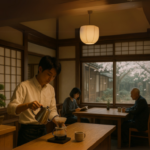

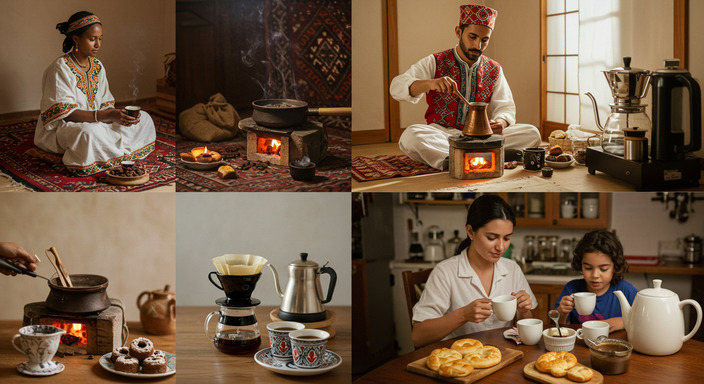
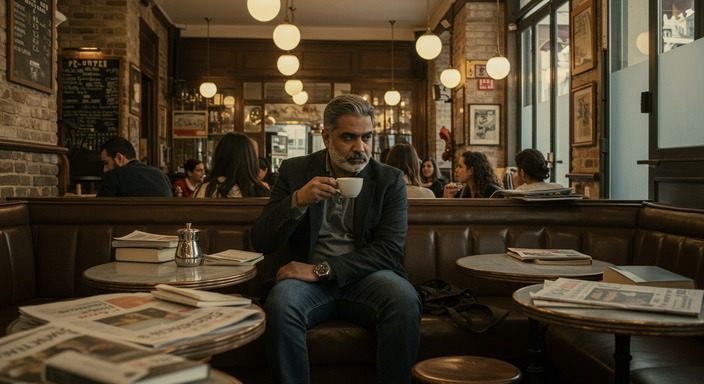
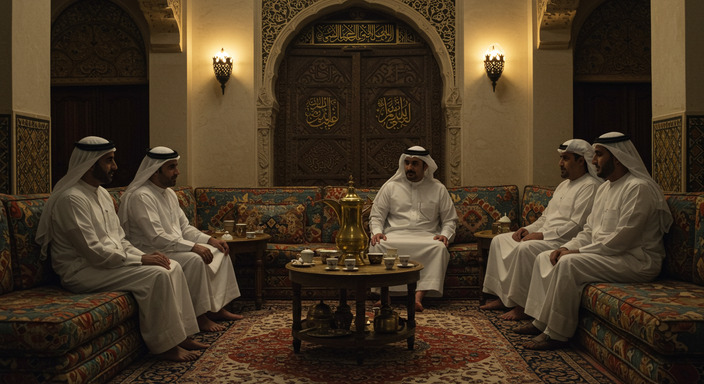
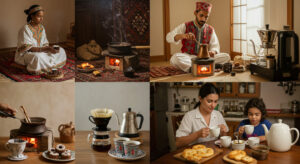





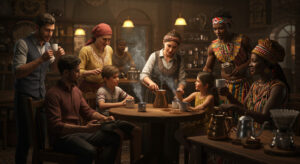


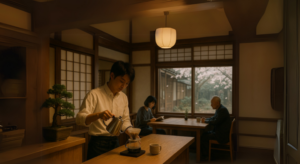
Post Comment